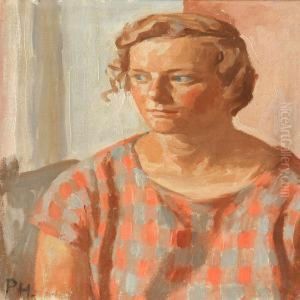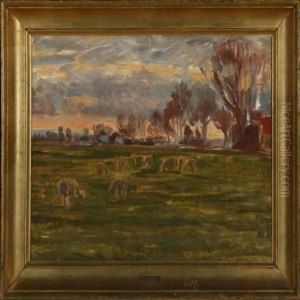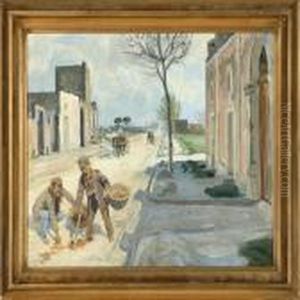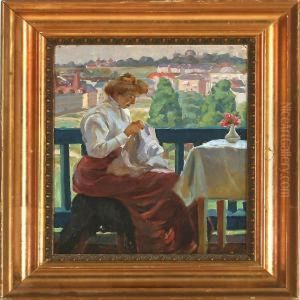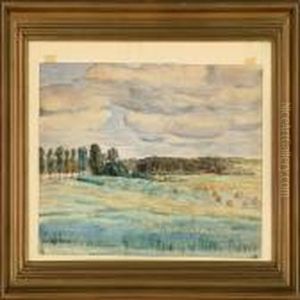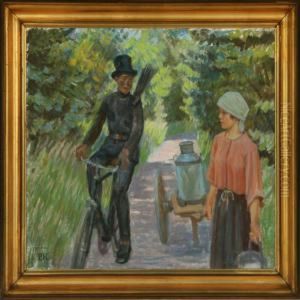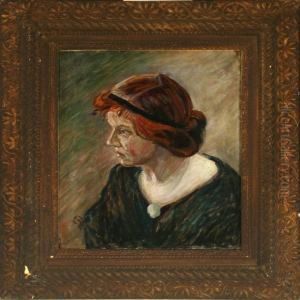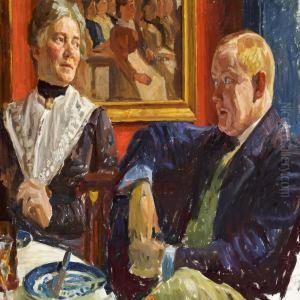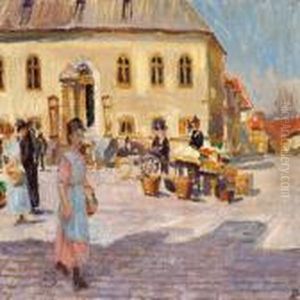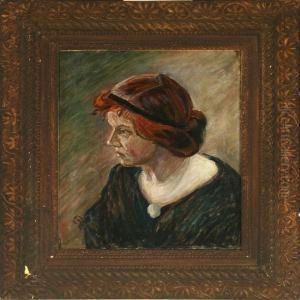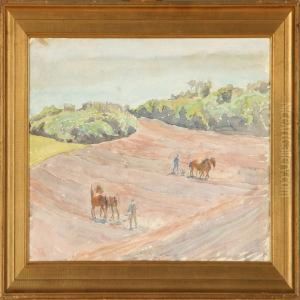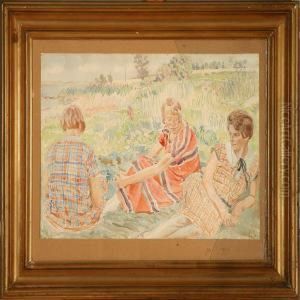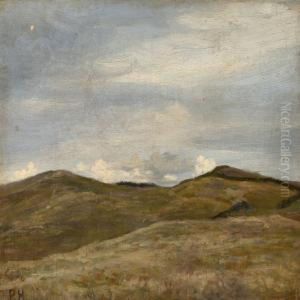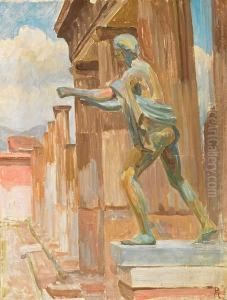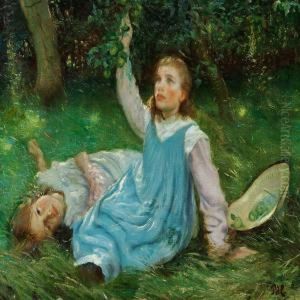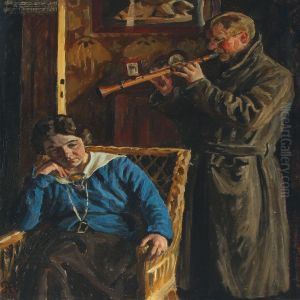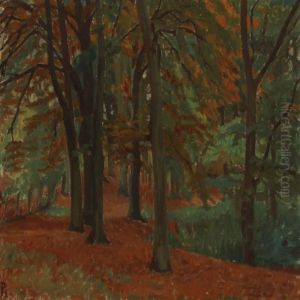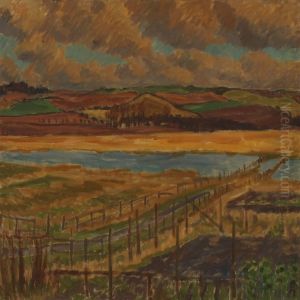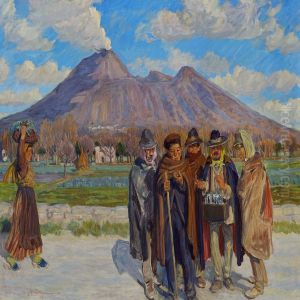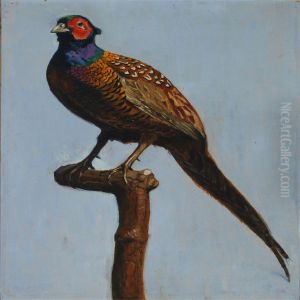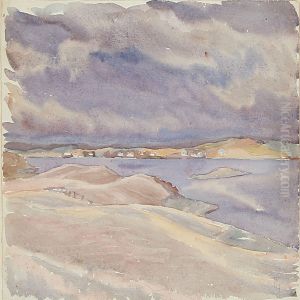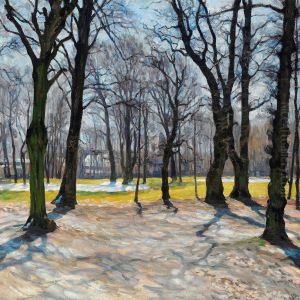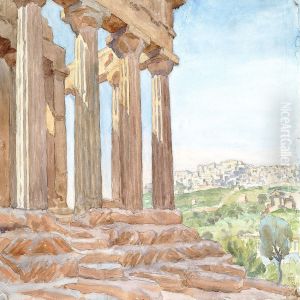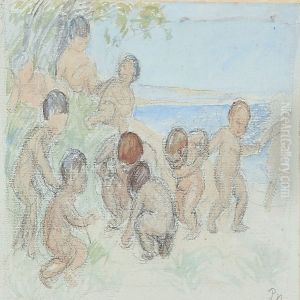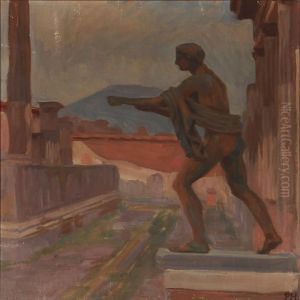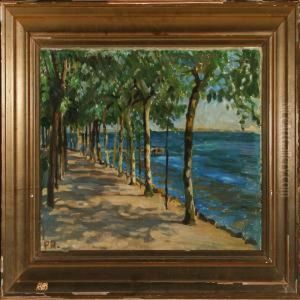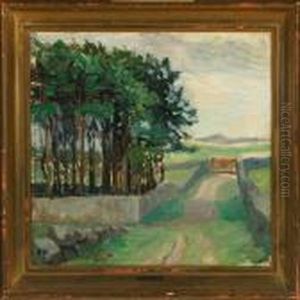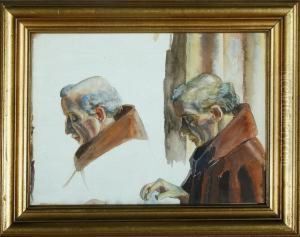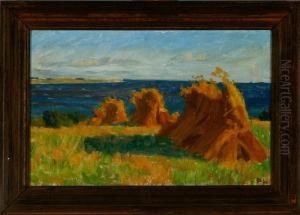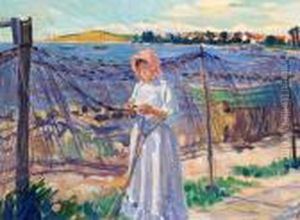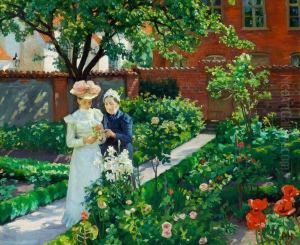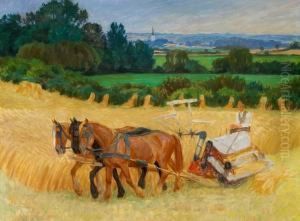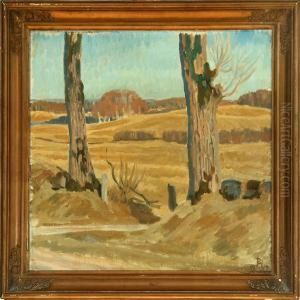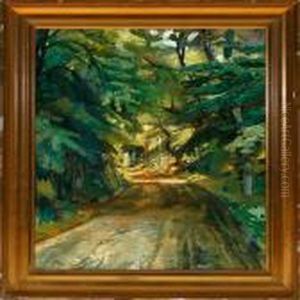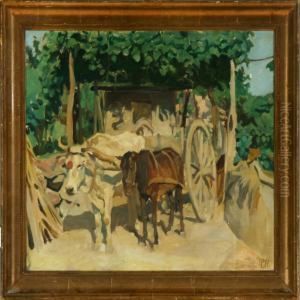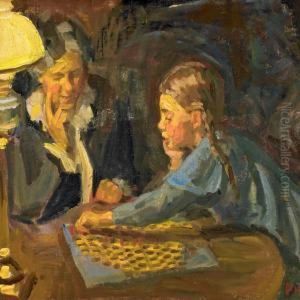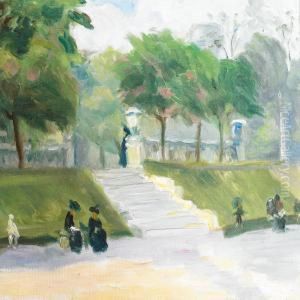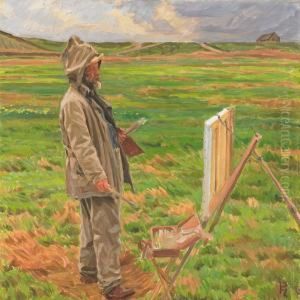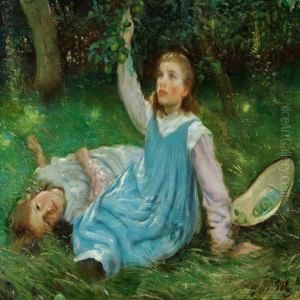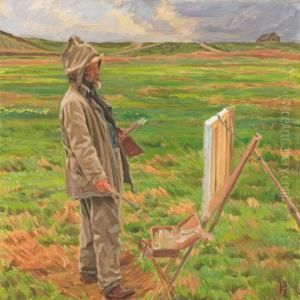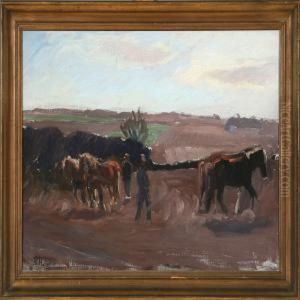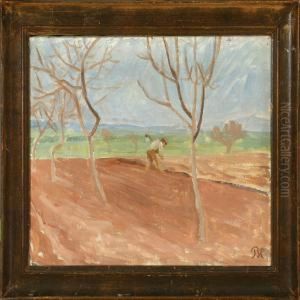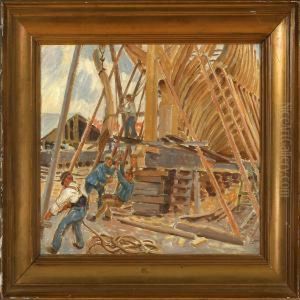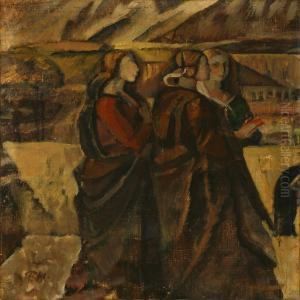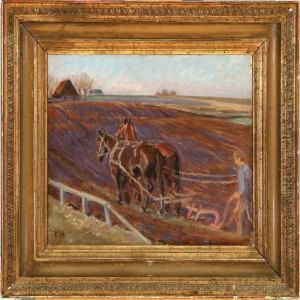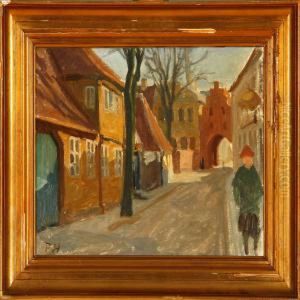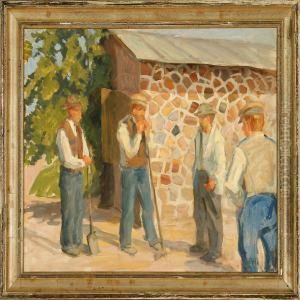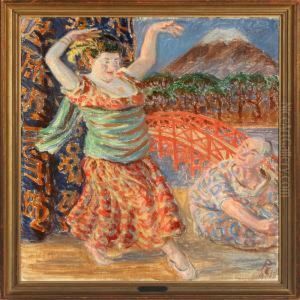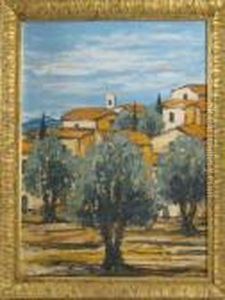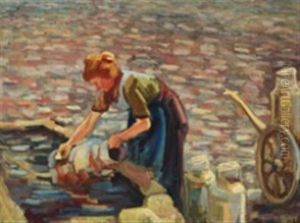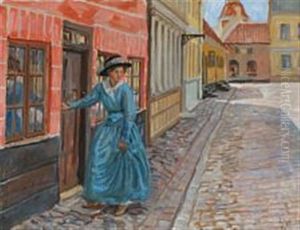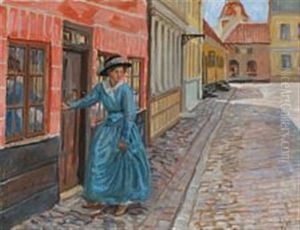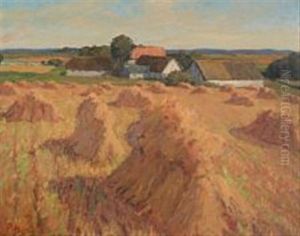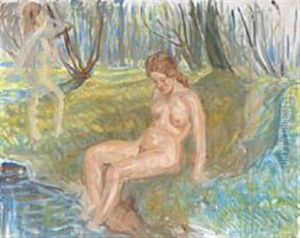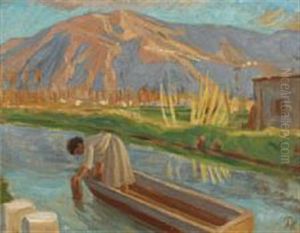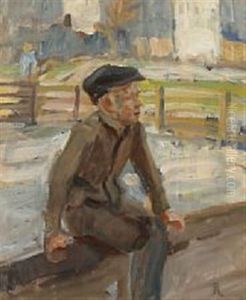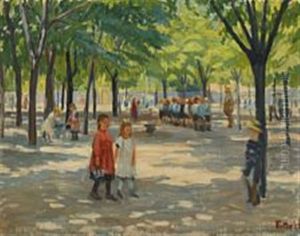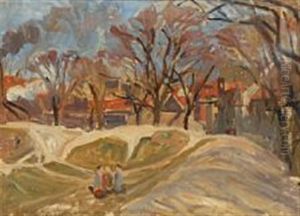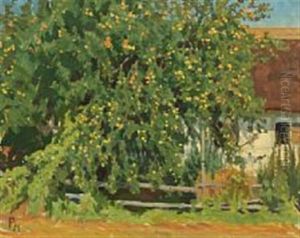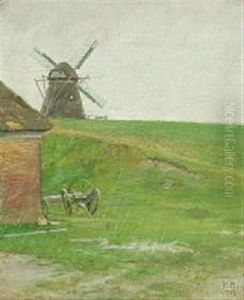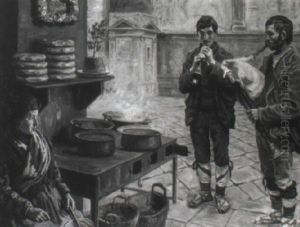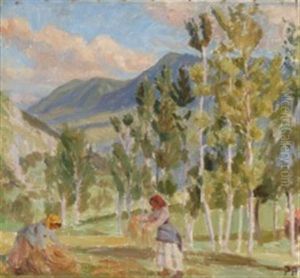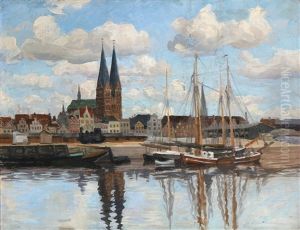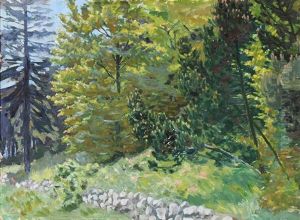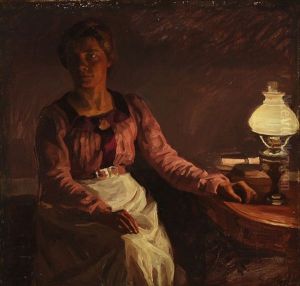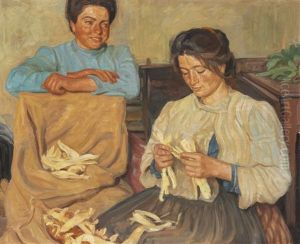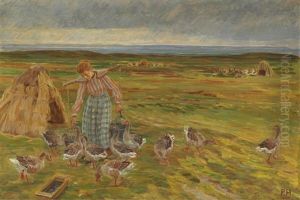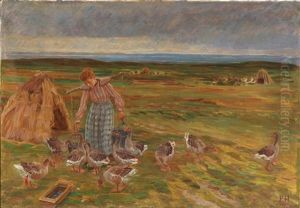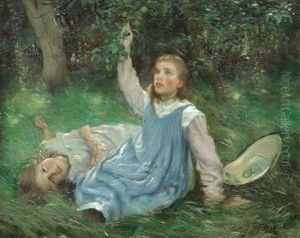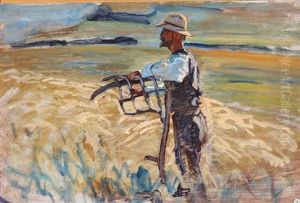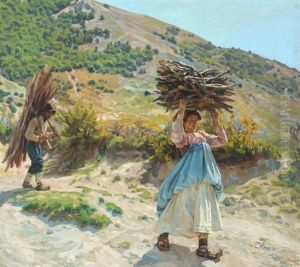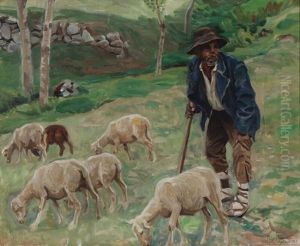Peter Marius Hansen Paintings
Peter Marius Hansen was a Danish painter who is best known for his participation in the colony of artists known as the Funen Painters (Fynboerne), based on the island of Funen in Denmark. Born on May 13, 1868, in Rome, Italy, Hansen was the son of the decorative painter Carl Hansen, who was part of the Danish-Italian artist community in Rome. His father's connections and background in the arts paved the way for Peter's artistic education and career.
Peter Hansen began his artistic training at an early age. He initially studied under his father before attending the Royal Danish Academy of Fine Arts in Copenhagen from 1884 to 1890. At the academy, Hansen was influenced by the artistic traditions of Denmark, which at that time were characterized by a blend of realism and national romanticism.
After his education, Hansen returned to Funen and became one of the central figures in the artist colony there. Alongside other artists such as Fritz Syberg and Johannes Larsen, Hansen became known for paintings that depicted the everyday life and landscapes of the island, capturing the unique light and atmosphere of the Danish countryside. He was particularly noted for his ability to portray the simplicity and beauty of rural life, often featuring the working people of the region in his works.
Hansen's style was rooted in realism, and he is often associated with the plein air painting tradition, where artists paint outdoors to capture the natural light and colors of their subjects. His works are characterized by a luminous palette, with a particular emphasis on the effects of sunlight and shadow.
During his lifetime, Peter Marius Hansen exhibited widely and received considerable acclaim. He participated in exhibitions at the Charlottenborg Palace, the annual venue for contemporary Danish art, and his works were collected by both national institutions and private collectors.
Peter Marius Hansen continued to paint and contribute to the Funen artistic community until his death on February 6, 1928, in Faaborg, Denmark. His legacy is preserved in the Faaborg Museum, where many of his works are on display, showcasing his contribution to Danish art and his role in the Funen Painters' movement. The colony's significance in Danish cultural history remains recognized for its impact on the development of Danish art in the late 19th and early 20th centuries.
